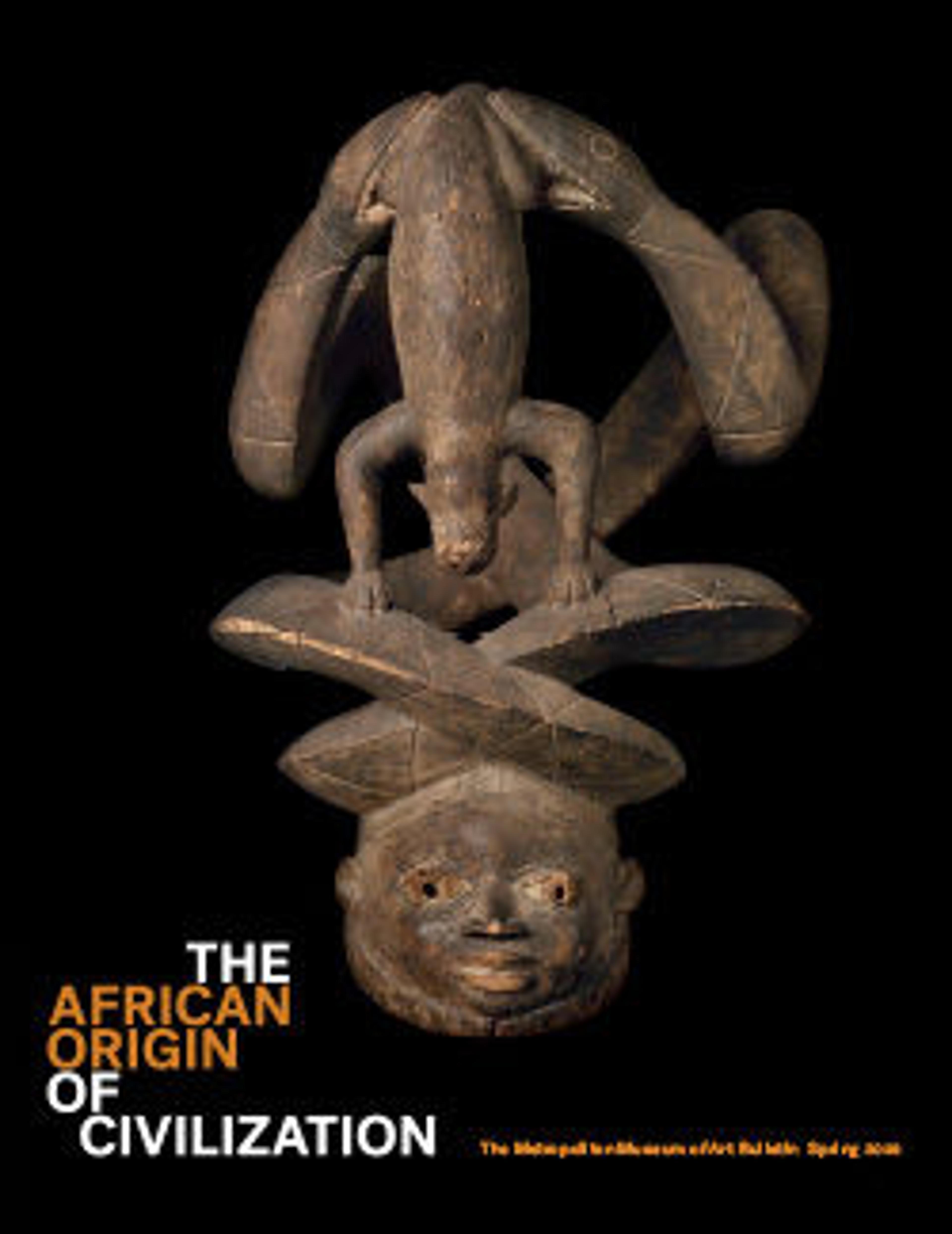Nkisi (power figure)
This work was the product of an intense collaboration between a sculptor and the initiated priest "nganga," who controlled its use in his professional practice. After an artist completed carving the artifact, the "nganga" transformed it into an object capable of healing illness, settling disputes, safeguarding the peace, and punishing wrongdoers. Each work of this kind or "nkisi" is associated with a spirit, that is subjected to a degree of human control. The term "nkisi" may relate to a wide spectrum of physical receptacles, including cloth packets, filled vessels, as well as the carved wood sculptures studied by art historians. This piece is especially admired for its reflective inward expression.
Among the many amulets and bound bundles attached to this "nkisi," are a finely carved anthropomorphic cross and a small gong. The cross alludes to the division between the land of the living and the land of the dead and represents the meeting place of these two worlds, or the "crossroads." The gong and other musical instruments of this type are believed to sound in the land of the dead and are therefore used to call the spirit of the "nkisi." The "nkisi's" power is further enhanced by the addition of two miniature "minkisi," one with a cowry embedded in its stomach and the other encrusted with a thick layer of medicines.
Cloth and tied bundles, like those seen in abundance on this "nkisi," have multiple interpretations. Knots and the act of tying are associated with the binding and capturing of a spirit. Additionally, cloth as a cherished commodity represents a generous financial offering made to the "nkisi" in gratitude for its assistance. Finally, cloth taken from intimate garments seals the connection between a supplicant and the "nkisi."
This nkisi has been a highlight of the Rockefeller collection since its acquisition in 1952.
Among the many amulets and bound bundles attached to this "nkisi," are a finely carved anthropomorphic cross and a small gong. The cross alludes to the division between the land of the living and the land of the dead and represents the meeting place of these two worlds, or the "crossroads." The gong and other musical instruments of this type are believed to sound in the land of the dead and are therefore used to call the spirit of the "nkisi." The "nkisi's" power is further enhanced by the addition of two miniature "minkisi," one with a cowry embedded in its stomach and the other encrusted with a thick layer of medicines.
Cloth and tied bundles, like those seen in abundance on this "nkisi," have multiple interpretations. Knots and the act of tying are associated with the binding and capturing of a spirit. Additionally, cloth as a cherished commodity represents a generous financial offering made to the "nkisi" in gratitude for its assistance. Finally, cloth taken from intimate garments seals the connection between a supplicant and the "nkisi."
This nkisi has been a highlight of the Rockefeller collection since its acquisition in 1952.
Artwork Details
- Title:Nkisi (power figure)
- Artist:Kongo artist and nganga (ritual specialist)
- Date:19th–first half of 20th century
- Geography:Democratic Republic of the Congo
- Culture:Kongo
- Medium:Wood, pigment, resin, iron, brass, tin, cloth, plant fiber cord, beads, cowrie shells, bone or ivory, arrows, leather, seeds, animal horn
- Dimensions:H. 23 1/8 x D. 10 1/4 x W. 10 in. (58.8 x 26 x 25.4 cm)
- Classification:Wood-Sculpture
- Credit Line:The Michael C. Rockefeller Memorial Collection, Bequest of Nelson A. Rockefeller, 1979
- Object Number:1979.206.127
- Curatorial Department: The Michael C. Rockefeller Wing
More Artwork
Research Resources
The Met provides unparalleled resources for research and welcomes an international community of students and scholars. The Met's Open Access API is where creators and researchers can connect to the The Met collection. Open Access data and public domain images are available for unrestricted commercial and noncommercial use without permission or fee.
To request images under copyright and other restrictions, please use this Image Request form.
Feedback
We continue to research and examine historical and cultural context for objects in The Met collection. If you have comments or questions about this object record, please contact us using the form below. The Museum looks forward to receiving your comments.
